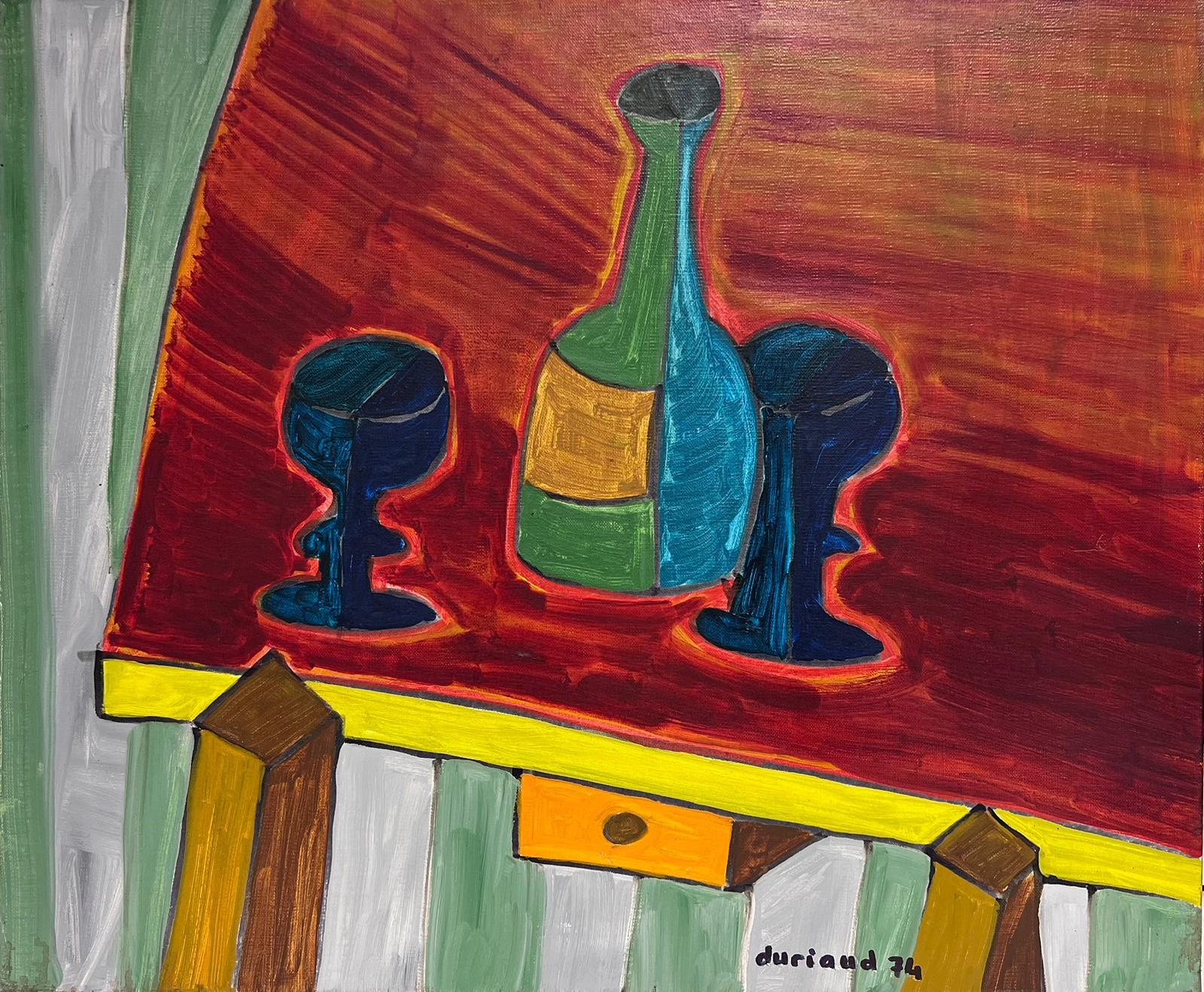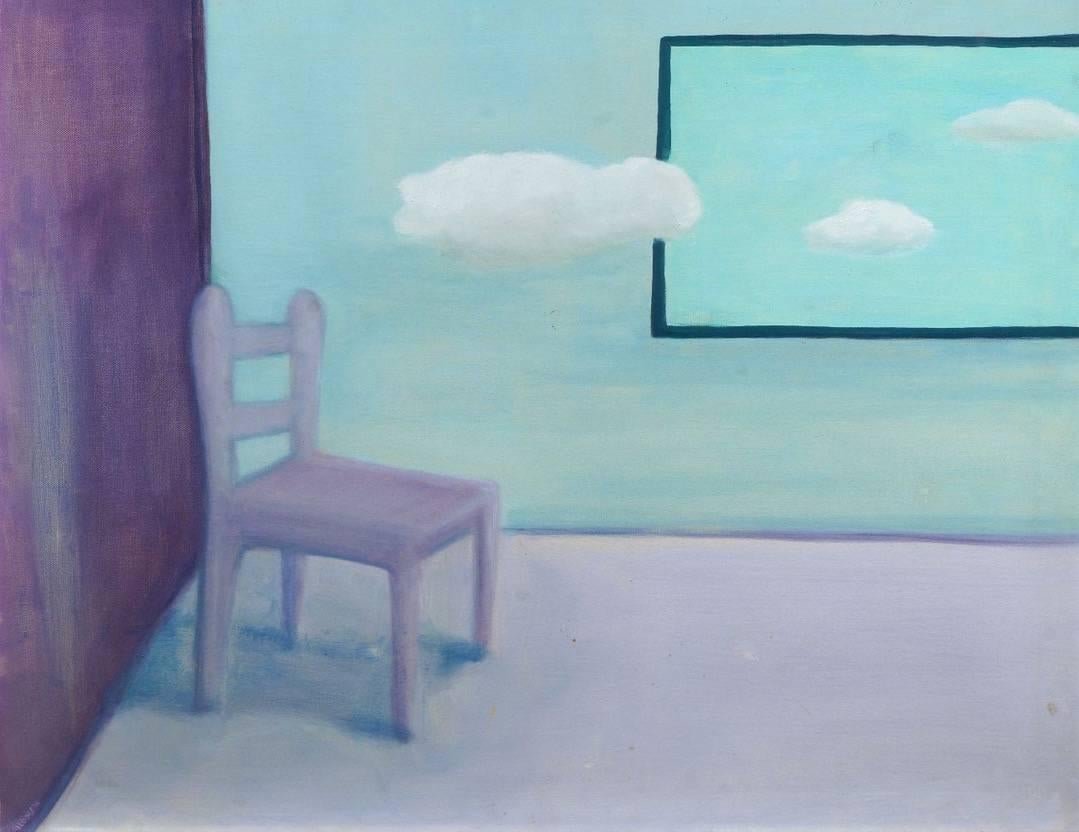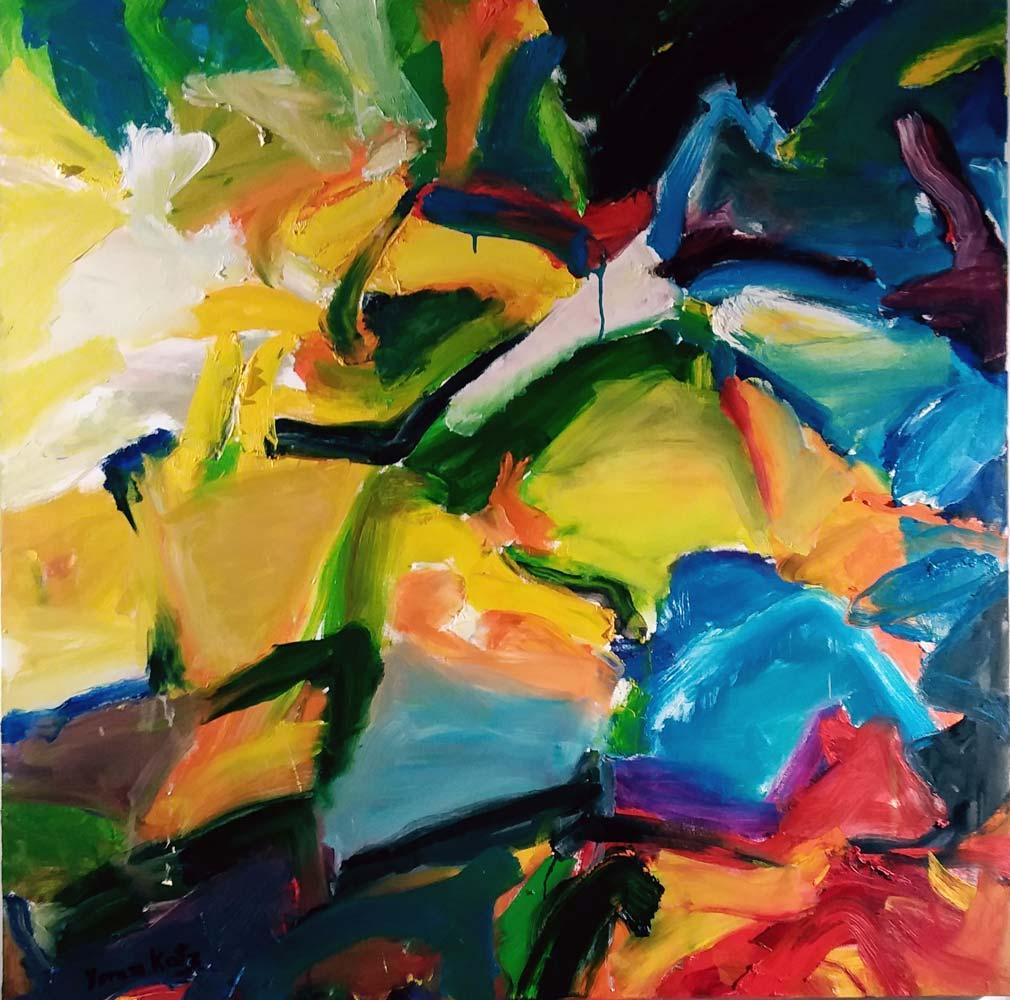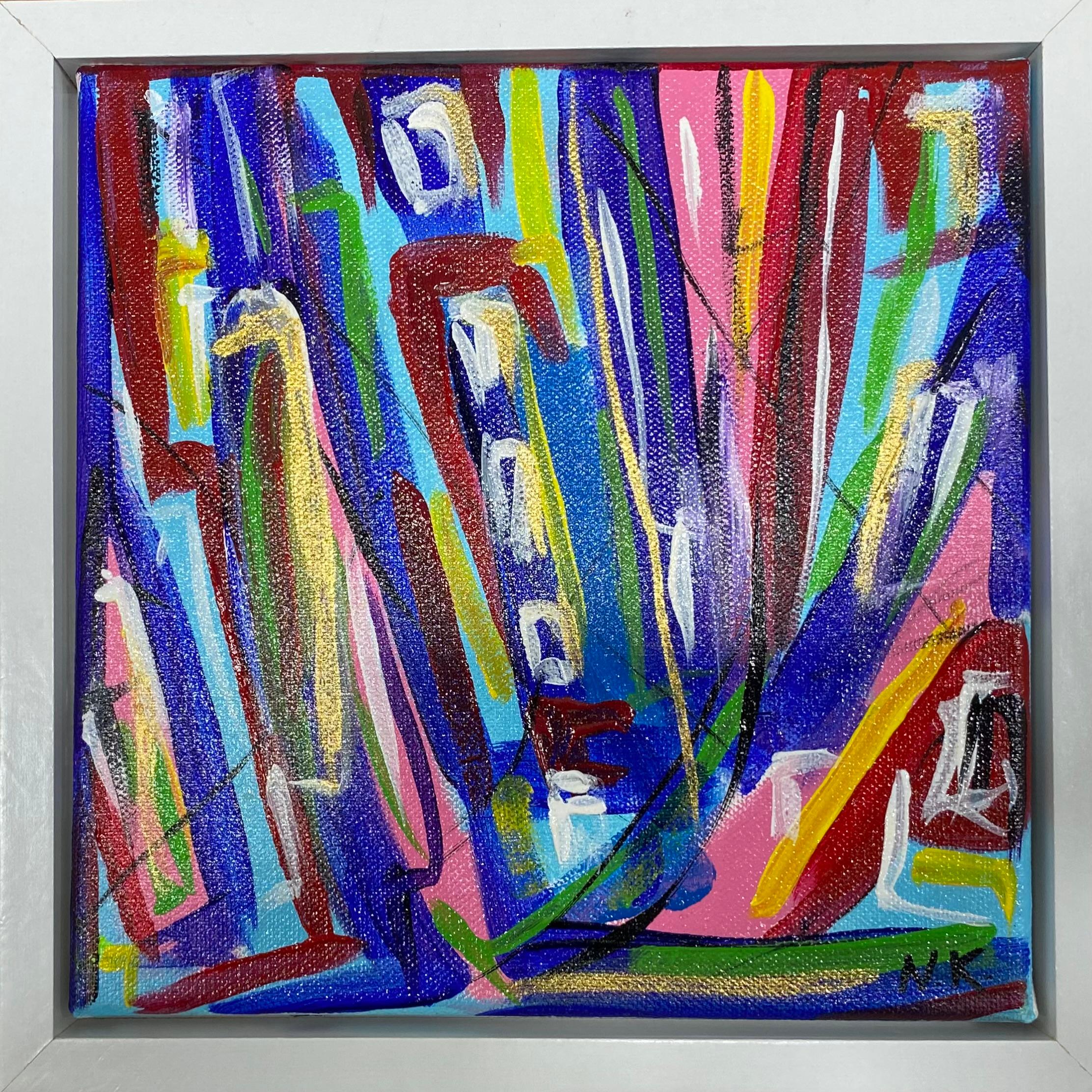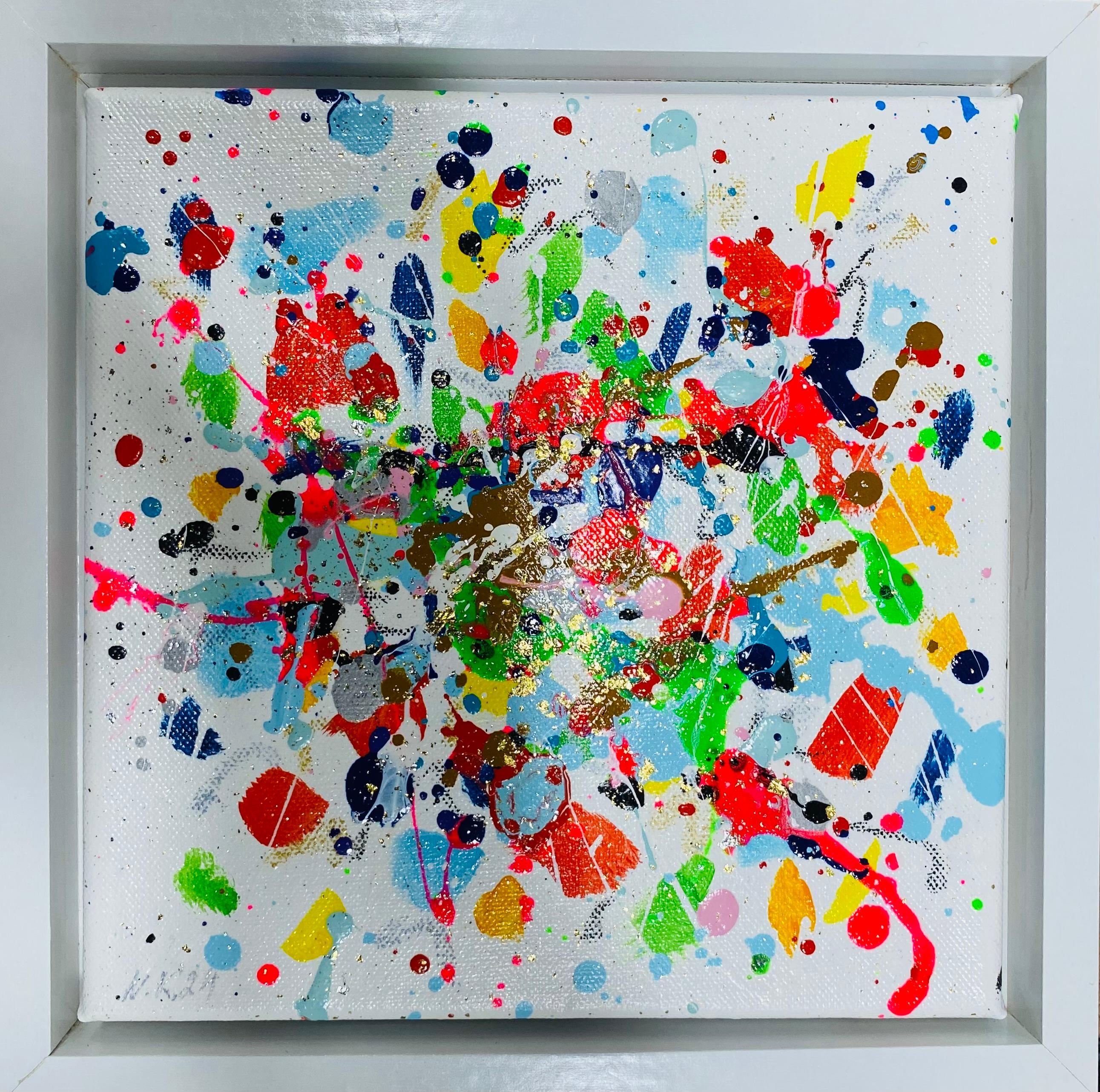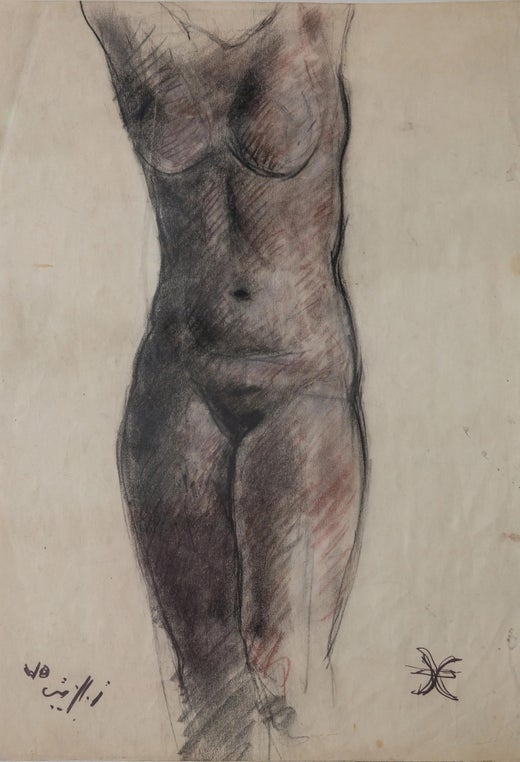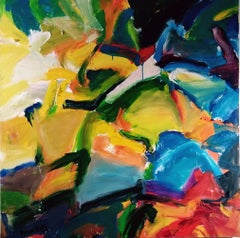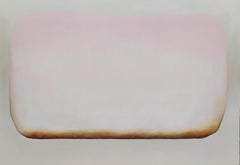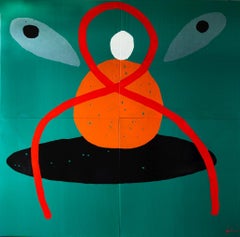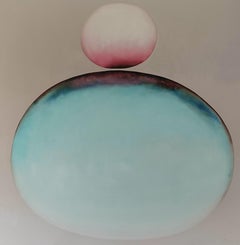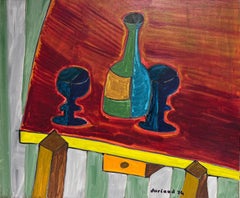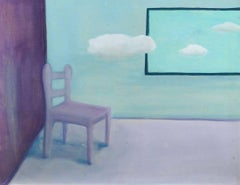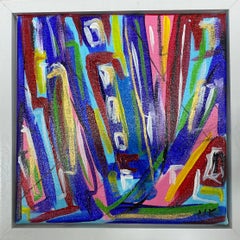Items Similar to "Debris III" Abstract Oil Painting 28" x 22" in (1983) by Zaccaria Zeini
Want more images or videos?
Request additional images or videos from the seller
1 of 8
Zaccaria Zeini"Debris III" Abstract Oil Painting 28" x 22" in (1983) by Zaccaria Zeini1983
1983
$13,000
£9,866.81
€11,372.31
CA$18,218.51
A$20,333.43
CHF 10,697.70
MX$246,995.01
NOK 135,618.41
SEK 126,921.84
DKK 84,875.51
About the Item
"Debris III" Abstract Oil Painting 28" x 22" in (1983) by Zaccaria Zeini
Medium: oil on canvas
Signed and dated
Comes in old original frame
Zaccaria El Zeini (1932 - 1993) was raised in the popular district of Sayyida Zienab in Old Cairo and graduated from the Faculty of Fine Arts in the city’s capital, where his graduation project revolved around the birth of the female saint, the namesake of the area where he was born. He was a postwar Modernist who received his formal training in painting in Venice, graduating from the Academy of Pravana, and it was in Italy that he gained his fascination with Greco-Roman architecture, which would develop into a preferred subject in his painting. He later became a professor at his alma mater, the Faculty of Fine Arts, and ended his career as head of its painting department. El Zeini’s oeuvre spans predominantly expressionist and abstract-figurative painting styles, with a strong proclivity towards using different personal symbols in his work and throughout several periods. These symbols connote each of the three wives he had during his life, and he cryptically places these symbols as markers throughout his paintings, whether discreetly or overtly. His formative upbringing in the Sayyida Zeinab district remained one of the most significant influences on his trajectory as an artist, having been exposed to since birth the popular celebrations and festivities surrounding the birth of the granddaughter of the Prophet Muhammed.
The first period was predicated on the quintessentially Egyptian practices and folk rituals and rites of ‘el moulid’ and ‘el zar.’ His work has always been distinguished for portraying the human figure (face and torso) enclosed in a geometric shape of either a square or a rectangle, often in a prominent contrasting color like green or red against backgrounds in predominantly neutral and earthy textured tones. Despite this rigid, enclosed portrayal, the viewer still feels the sympathy that the painter emotes toward these human beings living or oftentimes trapped, in this constrained and confined space in the reductionist form of a house, door, or window. El Zeini used this form of representation as a commentary on the impacts of societal constraints, norms, prejudices, and discrimination. It was through these ‘el moulid’ and ‘el zar’ periods that El Zeini was able to enrich his imagination and that of his audience and find refuge in it, thus transmitting to us his message in a poignant and enduring manner.
In some early works when he concentrated on the plight of the woman, and constantly featured women enclosed by such simplified bars, windows, or doors, in his basic geometric enclosures, in doing so he was criticizing the passivity of women and her role vis-à-vis her society. In his second period, El Zeini devoted himself to the artistic study of the concept of garbage and waste, ‘el zibala.’ El Zeini emphasized the salient topic of waste management on the streets of Cairo, he accomplished this by often dividing the painting in two and depicting abstract forms of detritus, debris, and discarded waste throughout the canvas and on either side of the divide. This period was a thoroughly original artistic undertaking and underscored the artist’s innate predilection for dedicating his art to social themes and with an underlying message that permeated his work, which has remained especially pertinent in today’s world. In his final period, El Zeini focused on the impression of flowers, introducing us to an alternative view of the subject by using geometric design and three-dimensional shapes. El Zeini also left us various examples of impressive lithography, which he became deeply involved with later on towards the end of his career and death, covering the more calming and serene themes of landscapes and flowers.
- Creator:Zaccaria Zeini (1932 - 1993, Egyptian)
- Creation Year:1983
- Dimensions:Height: 28 in (71.12 cm)Width: 22 in (55.88 cm)Depth: 1 in (2.54 cm)
- Medium:
- Period:
- Condition:
- Gallery Location:Culver City, CA
- Reference Number:1stDibs: LU1085116754402
Zaccaria El Zeini (1932 - 1993) was raised in the popular district of Sayyida Zienab in Old Cairo and graduated from the Faculty of Fine Arts in the city’s capital, where his graduation project revolved around the birth of the female saint, the namesake of the area where he was born. He was a postwar Modernist who received his formal training in painting in Venice, graduating from the Academy of Pravana, and it was in Italy that he gained his fascination with Greco-Roman architecture, which would develop into a preferred subject in his painting. He later became a professor at his alma mater, the Faculty of Fine Arts, and ended his career as head of its painting department. El Zeini’s oeuvre spans predominantly expressionist and abstract-figurative painting styles, with a strong proclivity towards using different personal symbols in his work and throughout several periods. These symbols connote each of the three wives he had during his life, and he cryptically places these symbols as markers throughout his paintings, whether discreetly or overtly. His formative upbringing in the Sayyida Zeinab district remained one of the most significant influences on his trajectory as an artist, having been exposed to since birth the popular celebrations and festivities surrounding the birth of the granddaughter of the Prophet Muhammed. The first period was predicated on the quintessentially Egyptian practices and folk rituals and rites of ‘el moulid’ and ‘el zar.’ His work has always been distinguished for portraying the human figure (face and torso) enclosed in a geometric shape of either a square or a rectangle, often in a prominent contrasting color like green or red against backgrounds in predominantly neutral and earthy textured tones. Despite this rigid, enclosed portrayal, the viewer still feels the sympathy that the painter emotes toward these human beings living or oftentimes trapped, in this constrained and confined space in the reductionist form of a house, door, or window. El Zeini used this form of representation as a commentary on the impacts of societal constraints, norms, prejudices, and discrimination. It was through these ‘el moulid’ and ‘el zar’ periods that El Zeini was able to enrich his imagination and that of his audience and find refuge in it, thus transmitting to us his message in a poignant and enduring manner. In some early works when he concentrated on the plight of the woman, and constantly featured women enclosed by such simplified bars, windows, or doors, in his basic geometric enclosures, in doing so he was criticizing the passivity of women and her role vis-à-vis her society. In his second period, El Zeini devoted himself to the artistic study of the concept of garbage and waste, ‘el zibala.’ El Zeini emphasized the salient topic of waste management on the streets of Cairo, he accomplished this by often dividing the painting in two and depicting abstract forms of detritus, debris, and discarded waste throughout the canvas and on either side of the divide.
About the Seller
4.8
Platinum Seller
Premium sellers with a 4.7+ rating and 24-hour response times
Established in 2016
1stDibs seller since 2018
425 sales on 1stDibs
Typical response time: <1 hour
- ShippingRetrieving quote...Shipping from: Cairo, Egypt
- Return Policy
Authenticity Guarantee
In the unlikely event there’s an issue with an item’s authenticity, contact us within 1 year for a full refund. DetailsMoney-Back Guarantee
If your item is not as described, is damaged in transit, or does not arrive, contact us within 7 days for a full refund. Details24-Hour Cancellation
You have a 24-hour grace period in which to reconsider your purchase, with no questions asked.Vetted Professional Sellers
Our world-class sellers must adhere to strict standards for service and quality, maintaining the integrity of our listings.Price-Match Guarantee
If you find that a seller listed the same item for a lower price elsewhere, we’ll match it.Trusted Global Delivery
Our best-in-class carrier network provides specialized shipping options worldwide, including custom delivery.More From This Seller
View All"Sky against Earth" Abstract Painting 48 x 48" inch by Yoram Katz
Located in Culver City, CA
"Sky against Earth" Abstract Painting 48 x 48" inch by Yoram Katz
ABOUT THE ARTIST:
Born in Israel.
Graduated from the Bazelel Art Academy in Jerusalem.
Resides in Los Angeles, Cali...
Category
21st Century and Contemporary Abstract Abstract Paintings
Materials
Canvas, Oil
"Untitled 1.1.23" Abstract Oil Painting 53" x 77" inch by Gayatri Gamuz
By Gayatri Gamuz
Located in Culver City, CA
"Untitled 1.1.23" Abstract Oil Painting 53" x 77" inch by Gayatri Gamuz
This artwork ships rolled in a tube due to its size
In search of silence, in search of the self.
Her work e...
Category
21st Century and Contemporary Abstract Abstract Paintings
Materials
Canvas, Oil
"Untitled 6" Painting 102" x 102" inch by GUELA TSOULADZE
Located in Culver City, CA
"Untitled 6" Painting 102" x 102" inch by GUELA TSOULADZE
Oil painting on oilcloth canvases.
ABOUT THE ARTIST:
Nomad from birth, Guela Tsouladzé was born on November 8, 1959 in Tbilisi, Georgia, from a French mother and a Georgian father. His father was one of the first Georgian psychanalyst; but working with the conscient and subconscient of the homo sovieticus was a disputed occupation, criticized by the soviet ideology. Therefore, it required a significant dose of audacity; it’s in this context of insubordination and freedom, that Guela tirelessly repeats that he will be an artist, without ever having painted anything.
The father thus commissioned his first work: a black dot on the ceiling of his office, which his patients would fix during the sessions. The gateway to hypnosis, and the artist’s future signature. Perhaps Guela's innate sense of daring and escapism comes from there; these two themes are till today reflected in his works.
Guela grows up in a surreal artistic universe, between France and Georgia, inspired in particular by Pirosmani, the brothers Zdanevitch and Salvador Dali, whom he met shortly before his death in 1981 at Portiligat Cadaques, and surrounded by the filmmaker Paradjanov, a friend of the Tsouladze family. He begins his studies at the Fine Arts on Tbilisi in 1977, but the ultimate horizon is Paris. He joins the Art Décoratifs from 1980 to 1983 and then the Beaux-Arts from 1983 to 1985. He becomes the assistant of Christian Boltanski, whom he follows from exhibition to exhibition.
In France, the 80s are colorful years, wild like a Fauvist painting. Art comes out of museums and gives birth to the free figuration, an elusive movement, which was slowly taking shape in the lethargy of the Beaux-Arts. Pop culture, in its spontaneity and in its lack of self-control, takes over everything and breaks down all codes, groups and borders. Art is free from all constraints and analysis.
Guela is there at the right time, in the right place, with the right people. The Holy Trinity, as he likes to repeat. These crazy years are an ecstatic playground for his artistic instincts.
Guela paints on everything: papers, canvases or newspapers. His grand formats are at the scale of his silhouette; he leaves the Beaux-Art and joins the first squats in the nineteenth arrondissement of Paris, notably the Quai de Seine workshop, which he shares with Remy Blanchard and Vincent Scali. These are the years of Ben, of the Di Rosa brothers, of Robert Combas and François Boisrond.
Art for everyone, and party for all. Guela follows his intuitions to Ibiza and Barcelona from 1987 to 1993, where he works at the Casa Caritad, which will later become the city's Museum of Modern Art. This colorful and collective delight contrasts with the dark anxieties of our time. Contrary to the widespread dystopia, it was then the utopia that reigned!
New York is its epicenter, shaped by Basquiat and Keith Haring. Guela lives there from 1993 to 1998, including several years at the legendary Chelsea Hotel, of which he covers the walls and furniture with Georgian calligraphy. This is where his simplistic, black, and loving figures were born, later becoming his trademark and one of the symbols of Batumi.
It was precisely at the end of the 90s that his desire to build bridges between his native country and France became deeper. The Soviet Union died in a burst of freedom, and the Georgians slowly come out of a fratricidal war, fueled by Russia. Georgia needs love, so Guela replaces the flag’s crosses with hearts, following the 2003 Rose Revolution.
Since then, convinced that art is the answer to the stress that is still plaguing Georgia, Guela multiplies projects for exhibitions, partnerships, festivals and art centers. He brings several French artists to the Garikula Residency, including Jean Dupuy...
Category
21st Century and Contemporary Abstract Abstract Paintings
Materials
Canvas, Oil
"Untitled 4.23" Abstract Oil Painting 53" x 53" inch by Gayatri Gamuz
By Gayatri Gamuz
Located in Culver City, CA
"Untitled 4.23" Abstract Oil Painting 53" x 53" inch by Gayatri Gamuz
This artwork ships rolled in a tube due to its size
In search of silence, in search of the self.
Her work eme...
Category
21st Century and Contemporary Abstract Abstract Paintings
Materials
Canvas, Oil
"Untitled 1.22" Abstract Oil Painting 78" x 54" inch by Gayatri Gamuz
By Gayatri Gamuz
Located in Culver City, CA
"Untitled 1.22" Abstract Oil Painting 78" x 54" inch by Gayatri Gamuz
This artwork ships rolled in a tube due to its size
In search of silence, in search of the self.
Her work eme...
Category
21st Century and Contemporary Abstract Abstract Paintings
Materials
Canvas, Oil
"Untitled 5" Painting 102" x 102" inch by GUELA TSOULADZE
Located in Culver City, CA
"Untitled 5" Painting 102" x 102" inch by GUELA TSOULADZE
Oil painting on oilcloth canvases.
ABOUT THE ARTIST:
Nomad from birth, Guela Tsouladzé was born on November 8, 1959 in Tbilisi, Georgia, from a French mother and a Georgian father. His father was one of the first Georgian psychanalyst; but working with the conscient and subconscient of the homo sovieticus was a disputed occupation, criticized by the soviet ideology. Therefore, it required a significant dose of audacity; it’s in this context of insubordination and freedom, that Guela tirelessly repeats that he will be an artist, without ever having painted anything.
The father thus commissioned his first work: a black dot on the ceiling of his office, which his patients would fix during the sessions. The gateway to hypnosis, and the artist’s future signature. Perhaps Guela's innate sense of daring and escapism comes from there; these two themes are till today reflected in his works.
Guela grows up in a surreal artistic universe, between France and Georgia, inspired in particular by Pirosmani, the brothers Zdanevitch and Salvador Dali, whom he met shortly before his death in 1981 at Portiligat Cadaques, and surrounded by the filmmaker Paradjanov, a friend of the Tsouladze family. He begins his studies at the Fine Arts on Tbilisi in 1977, but the ultimate horizon is Paris. He joins the Art Décoratifs from 1980 to 1983 and then the Beaux-Arts from 1983 to 1985. He becomes the assistant of Christian Boltanski, whom he follows from exhibition to exhibition.
In France, the 80s are colorful years, wild like a Fauvist painting. Art comes out of museums and gives birth to the free figuration, an elusive movement, which was slowly taking shape in the lethargy of the Beaux-Arts. Pop culture, in its spontaneity and in its lack of self-control, takes over everything and breaks down all codes, groups and borders. Art is free from all constraints and analysis.
Guela is there at the right time, in the right place, with the right people. The Holy Trinity, as he likes to repeat. These crazy years are an ecstatic playground for his artistic instincts.
Guela paints on everything: papers, canvases or newspapers. His grand formats are at the scale of his silhouette; he leaves the Beaux-Art and joins the first squats in the nineteenth arrondissement of Paris, notably the Quai de Seine workshop, which he shares with Remy Blanchard and Vincent Scali. These are the years of Ben, of the Di Rosa brothers, of Robert Combas and François Boisrond.
Art for everyone, and party for all. Guela follows his intuitions to Ibiza and Barcelona from 1987 to 1993, where he works at the Casa Caritad, which will later become the city's Museum of Modern Art. This colorful and collective delight contrasts with the dark anxieties of our time. Contrary to the widespread dystopia, it was then the utopia that reigned!
New York is its epicenter, shaped by Basquiat and Keith Haring. Guela lives there from 1993 to 1998, including several years at the legendary Chelsea Hotel, of which he covers the walls and furniture with Georgian calligraphy. This is where his simplistic, black, and loving figures were born, later becoming his trademark and one of the symbols of Batumi.
It was precisely at the end of the 90s that his desire to build bridges between his native country and France became deeper. The Soviet Union died in a burst of freedom, and the Georgians slowly come out of a fratricidal war, fueled by Russia. Georgia needs love, so Guela replaces the flag’s crosses with hearts, following the 2003 Rose Revolution.
Since then, convinced that art is the answer to the stress that is still plaguing Georgia, Guela multiplies projects for exhibitions, partnerships, festivals and art centers. He brings several French artists to the Garikula Residency, including Jean Dupuy...
Category
21st Century and Contemporary Abstract Abstract Paintings
Materials
Canvas, Oil
You May Also Like
Contemporary French Abstract Modernist Painting Still Life Wine Bottle & Glasses
By Christian Duriaud
Located in Cirencester, Gloucestershire
Still Life
by Christian Duriaud (French b. 1943)
signed and dated,
oil on canvas
inscribed verso
canvas: 20 x 24 inches
provenance: private collection, France
condition: very good ...
Category
Late 20th Century Modern Interior Paintings
Materials
Oil, Canvas
The Chair by the Window, Superb Large Surrealist oil painting on canvas
Located in Cirencester, Gloucestershire
The Chair by the Window
Surrealist School, circa 1970's
signed lower left, indistinctly (see photos)
framed: 24 x 30.5 inches
provenance: private collection, London
Superb Surreali...
Category
Mid-20th Century Surrealist Abstract Paintings
Materials
Canvas, Oil
Series “Between Heaven and Earth” - pastel, calm interior scandinavian style
Located in Vienna, AT
In creating this piece, I embraced the raw emotions of expressionism, channeled through the spontaneity of abstract forms. I layered acrylic using lack to set contrasts—capturing the...
Category
2010s Abstract Abstract Paintings
Materials
Canvas, Cotton Canvas, Mixed Media, Oil, Spray Paint, Acrylic
From the series "Bright Dreams" -abstractions blooming
Located in Vienna, AT
Artwork details
Medium : Acrylic on Canvas
Other details : Artwork on supported wooden frame. Ready to hang. Framing on request.
Dimensions : 20 x20 cm
About this artwork
In creat...
Category
2010s Abstract Abstract Paintings
Materials
Canvas, Cotton Canvas, Mixed Media, Oil, Spray Paint, Acrylic
Series "Infinite Flight" yellow, blue, pink, white, colourful Pollock’s style
Located in Vienna, AT
Artist : Natalia Krykun ©
Size : 20 H x 20 W x 2 D cm
Medium: Professional Acrylic Paints on canvas
Year: 2024
________________________________________________
In creating this vi...
Category
2010s Abstract Abstract Paintings
Materials
Canvas, Cotton Canvas, Mixed Media, Oil, Spray Paint, Acrylic
From the series "Bright Dreams" -abstractions blooming
Located in Vienna, AT
Artwork details
Medium : Acrylic on Canvas
Other details : Artwork on supported wooden frame. Ready to hang. Framing on request.
Dimensions : 20 x20 cm
About this artwork
In creat...
Category
2010s Abstract Abstract Paintings
Materials
Canvas, Cotton Canvas, Mixed Media, Oil, Spray Paint, Acrylic
